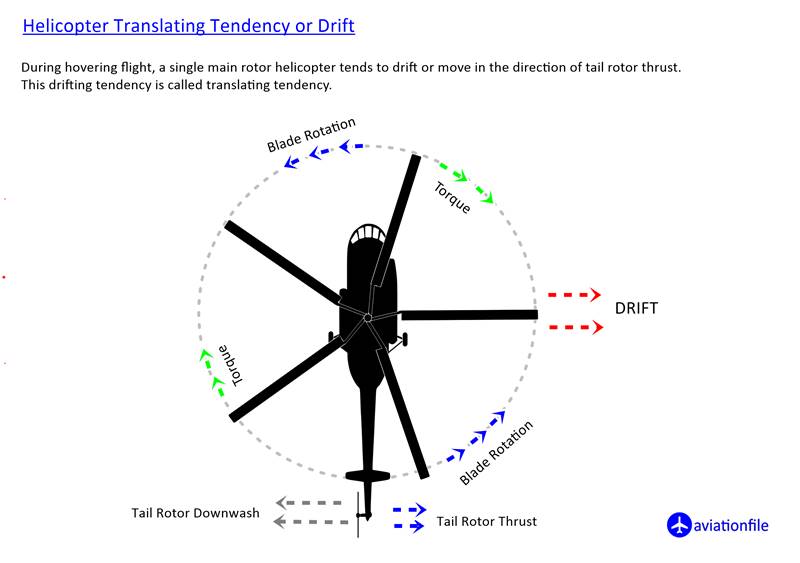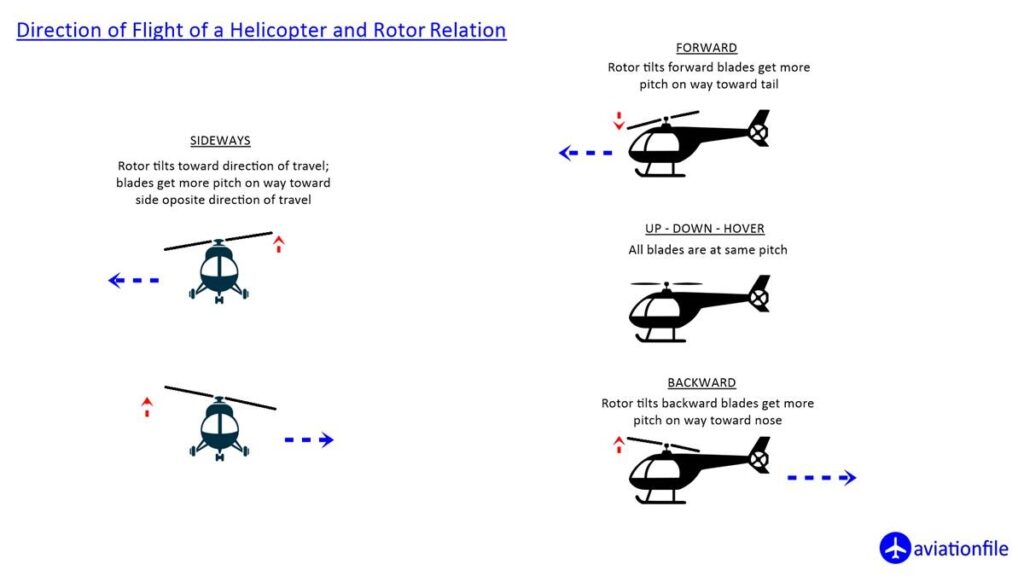Helicopter Translating Tendency: Taming the Sideward Drift
Stuck in a hover and your helicopter feels like it’s inching sideways? Don’t panic! This lateral movement is called translating tendency, a common quirk of single main rotor helicopters. Let’s untangle the physics behind it.
The Torque Twist
Imagine a spinning bicycle wheel. It wants to twist the handlebars in the opposite direction – that’s torque. Similarly, a helicopter’s main rotor spins, trying to spin the fuselage in the opposite direction.
The Tail Rotor’s Counteract
Enter the tail rotor, our helicopter’s hero. It spins opposite the main rotor, cancelling out that unwanted spin. But here’s the twist (pun intended): the tail rotor also generates thrust of its own.

The Drifting Force
This tail rotor thrust pushes the fuselage sideways, in the same direction it spins (usually right for most helicopters). This sideways push is translating tendency.
Pilots Take Control
Helicopter pilots are trained to sense and counter translating tendency. They use the cyclic control to tilt the main rotor slightly, creating a counteracting force that keeps the helicopter in a steady hover.
Minimizing the Mischief
While translating tendency is normal, some helicopters have slight design adjustments to minimize its effect. Additionally, proper cargo loading helps balance the aircraft and reduce sideways drift.
Understanding translating tendency is key to helicopter flight. By knowing this natural tendency to drift, pilots can maintain precise control and hover with confidence.

References & Further Reading:
- Federal Aviation Administration (FAA): Helicopter Flying Handbook (https://www.faa.gov/regulations_policies/handbooks_manuals/aviation/helicopter_flying_handbook) – Chapter 5
- Vertical Reference Helicopter Forum: Our Good Friend Cyclic Right Trim (https://helicopterforum.verticalreference.com/)
For more articles click.


